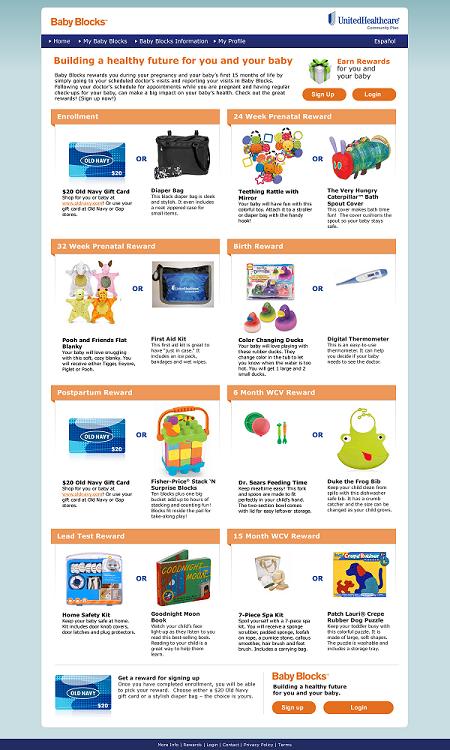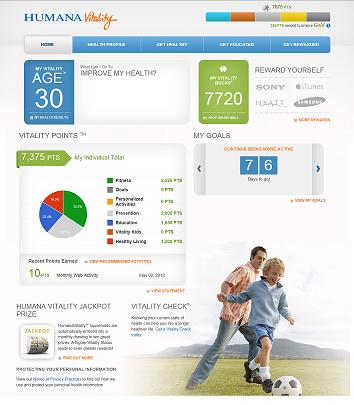Independence Blue Cross is moving quickly with their mobile connected health initiatives. Last fall, Independence partnered with Healthrageous to run a pilot with their own employees before expanding the program to their plan members. Now, Independence is rolling out the mobile connected health program to plan members.
During the initial six month pilot, 677 Independence employees were invited to join the pilot and 270 employees or about 40% participated in the pilot. Each employee received an email describing the “Walk the Talk” Wellness Challenge. The email was from the head of the division personally inviting their employee to participate, along with a teaser and information about the program.
“By participating in this challenge, you’ll get a sneak preview of Healthrageous, which we may offer to our customers in the future. Healthrageous makes it easy to view your progress and has interactive features to keep you motivated. It will help you set personal wellness goals, monitor your weight and blood pressure, and log your activity so that you’ll know you’re staying on target.”
Employees signed up for the program to improve their health and received educational messages delivered through the portal, email communications and mobile texts. Employees were offered a pedometer and a blood pressure cuff as tools to manage their health. Independence also placed kiosks, two in the headquarters and one in two different satellite offices to enable employees to access program information and upload their activity and health information.
“At Independence, we don’t just say we care about health and wellness — we walk the talk. The Healthrageous! platform is a fun way to set personal wellness goals and take simple steps toward better health. It easy to track progress and has fun, interactive features to keep associates motivated", explains Kim Eberach, Vice President of Wellness & Community Health, Independence Blue Cross.
Positive Pilot Results With Healthrageous Program
Independence has taken an in-depth look at the pilot results gained from both employee participation and engagement.
“We have been able to sustain high engagement rates throughout the duration of the program and have seen many users make changes in their daily behaviors. Blood pressure rates are on a steady decline and activity is still up five months into the program. We’ve seen the most engagement from individuals who identified themselves as having one or more chronic conditions,” explains Mike Yetter, Director of eBusiness at Independence.
At the end of the pilot, Independence conducted research with the employee participants. Here are some of their comments:
“It is keeping me so motivated to be healthy and aware of my physical activities, weight and blood pressure.”
“The BEST part of this is the automatic recording of results. Most people don't have time to add more things to their schedule, so not having to worry about going onto a website and logging in results is amazing.”
“Seeing the numbers on a daily basis is helpful.”
“I truly feel this program has had a positive impact on focusing on my health. The program made me accountable to myself on keeping track of exercise, blood pressure and weight.”
“Walk the Talk has challenged me to get moving! I love it. It's like having a real personal trainer, gently pushing you to do the right things; like drink more water, put the salt shaker down, get enough sleep each night, but also to have fun/unwind for at least 30 minutes per night. These are all things we know to do.”
“Once I got on track with the amount of steps I wanted to take every day, my main use for this has been weight management and seeing my weight gain/loss in front of my eyes. It has been a source of great encouragement to visually see my weight decrease... I can't fool myself with how much I think I weigh, it is all right there on the website.”
In addition to their marketing research, Independence is evaluating the program based on metrics and observations about how the features are being used:
• Program Usage: Employees were much more likely at least once to log in (90.0%) or upload steps (88.5%) than upload weight (63.0%) or a blood pressure reading (62.6%)
• Continuous Effort: On an going basis, the percentage of employees that logged in or logged their steps (including automated upload) was significantly higher than those employees who entered their weight or blood pressure.
Within the first two months of the pilot, overall engagement remained above 60%.
• Increased Activity: Approximately 20% of the program participants improved, increasing their step count by 2k step per day more than their baseline readings.
• Social Community Usage: Within the Healthrageous platform, participants have the option of specifying who sees their messages to their coworkers.
Several employees have decided to nudge their colleagues to get them motivated for change:
“You are kidding me…. Less than 5k steps today?!”
“Looks like you are crushing me on steps this week”
“I don’t see any scale readings. Too much partying?”
“Wow! You have really kept up your activity. Nice job even with all the travel!!”
Factors Driving Employee Engagement
As I reviewed Independence’s Healthrageous program in detail, I identified five key factors that are driving employee engagement. In order to share these factors within context, I will describe their value for an employee named Debbie who has Diabetes and is overweight.
1. Personalized Approach. When signing up for the program, Debbie can determine how she would like to participate from specifying her goals such as eating 5 fruits and vegetables each day, joining her coworkers for a walk over lunch 3 days a week to completing two dance classes each week. Based on Debbie’s specific goals, she receives messages through online, email and text which are educational and motivational. She can always go to her personalized page to see all of her information in one place.
2. Virtual Coach. After becoming a member of the program, Debbie receives frequent personalized communications to both remind and reinforce the goals that she selected. Debbie’s last message shared ways to increase her exercise throughout the week to see decreases in her weight. Each communication lists her recent activity and the dates that each activity was done. Debbie sees that she walked 10,000 steps most of the week of October 1st but only 5,345 steps on October 8th and 3,256 steps on October 15th which she realizes was when she was working on her big presentation.
3. Social Community Support. When logging in and viewing her personal page on the Healthrageous platform, Debbie sees messages from her online social community which includes a message from a co-worker about an upcoming walking challenge as well as encouraging messages from her husband and daughter. Each participant is in control of her own social community and sends out invitations to friends and family to join.
4. Automated Activity Tracking. Many of the wellness programs require the employee to enter the number of steps or time spent on an activity. Independence has placed sensors around the work site to automatically upload the activity information. This means that Debbie can walk by one of these spots and have her latest activity information reflected on her personalized page moments later. After all, Debbie is anxious to know how her team is doing in the latest competition.
5. Recognition & Rewards. For each Challenge round, participants who have achieved their goals are entered into a raffle drawing. Prizes have varied from an IPod Shuffle and a Kindle Fire, to gift cards depending on the overall length of the challenge. All participants who achieved their goals also receive a branded athletic workout shirt for their achievement. Debbie proudly wears her shirt as she walks with her team at lunch.
Future of Connected Health
Connected Health continues to be an emerging and evolving space as organizations tie their mobile initiatives into key strategic programs.
These technologies delivered through an online and mobile platform, offer an excellent opportunity to bridge the member’s experience between their insurance health program and their care team (e.g. physicians, nurses, coaches, caregivers, and other advocates). Connected Health will be most meaningful and engaging when data is gathered and shared to empower the consumer in ongoing behavior change towards their health goals. As Debbie discusses her progress in the Independence program with her Diabetes coach, she not only receives encouragement and motivation but also ideas for continuing to challenge herself to reach her health goals.
 Health and Wellness Incentives & Rewards,
Health and Wellness Incentives & Rewards,  Motivation for health and wellness,
Motivation for health and wellness,  consumer engagement evaluation,
consumer engagement evaluation,  educating consumers about health and wellness,
educating consumers about health and wellness,  family ehealth engagement in
family ehealth engagement in  Behavior Change Health & Wellness,
Behavior Change Health & Wellness,  Consumer Segmentation Health,
Consumer Segmentation Health,  Data Driven Health Engagement,
Data Driven Health Engagement,  Decision Support eHealth,
Decision Support eHealth,  Mobile Engagement Health & Wellness,
Mobile Engagement Health & Wellness,  Patient Engagement,
Patient Engagement,  Personalization eHealth,
Personalization eHealth,  Population health management
Population health management 







